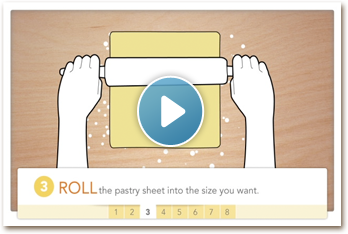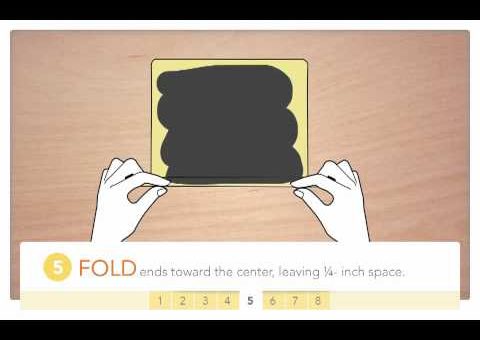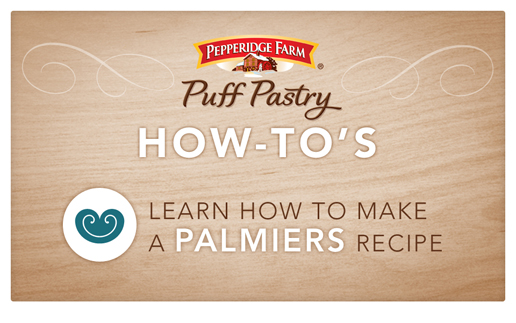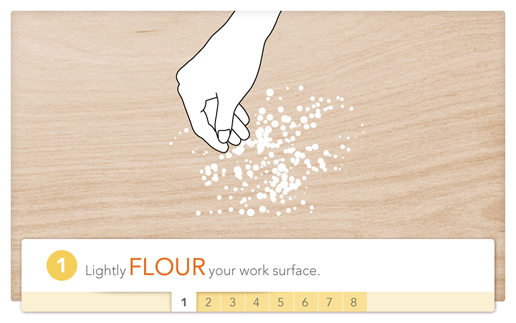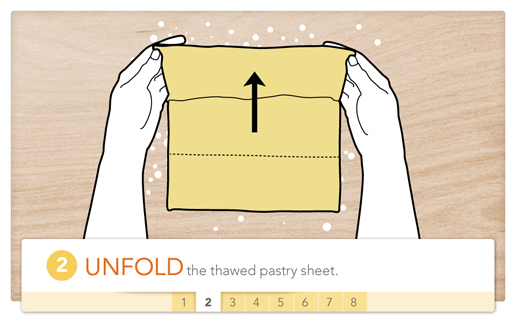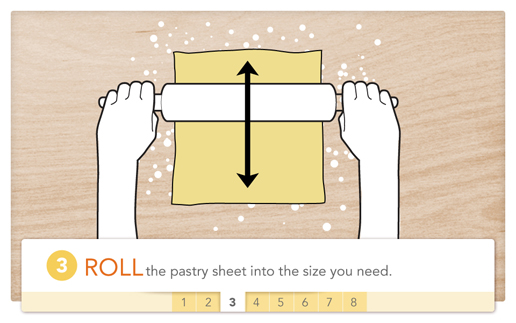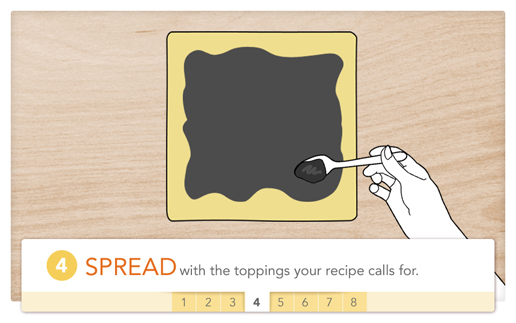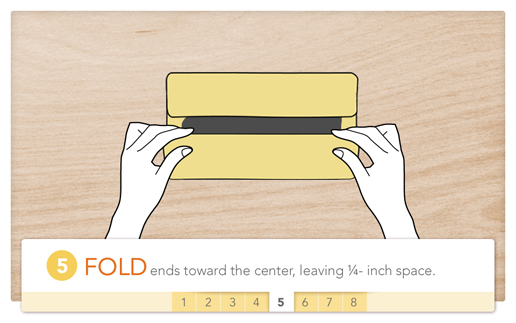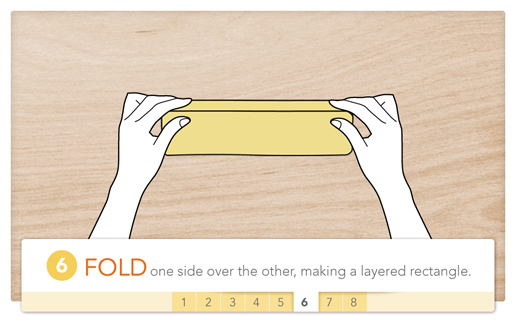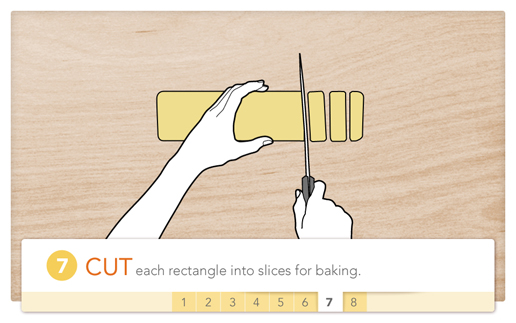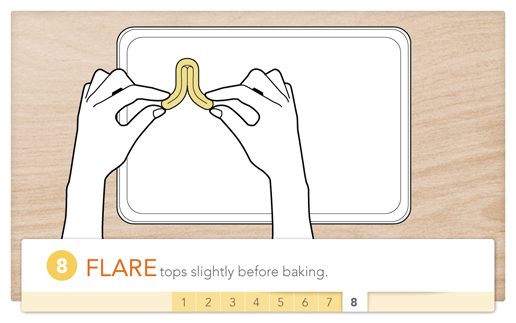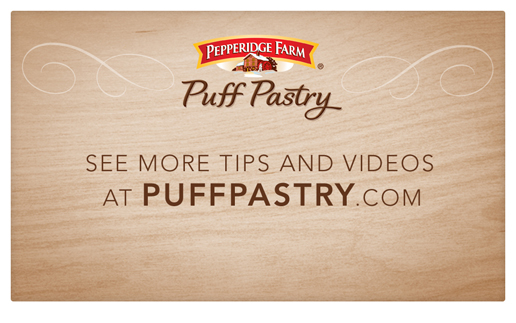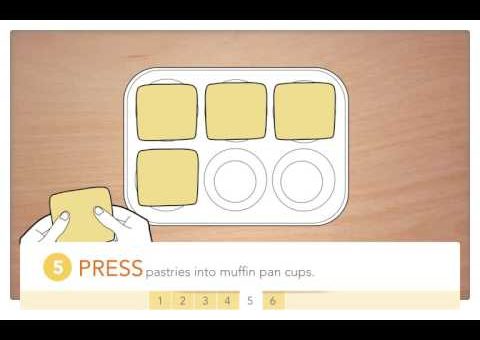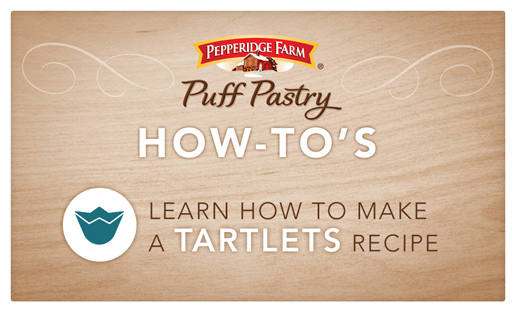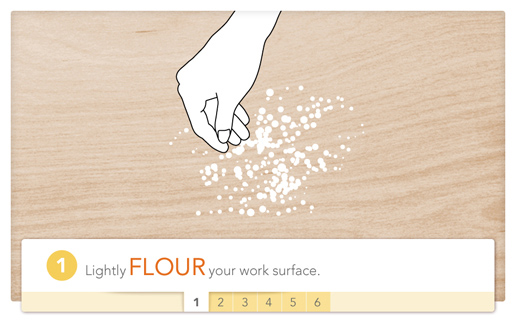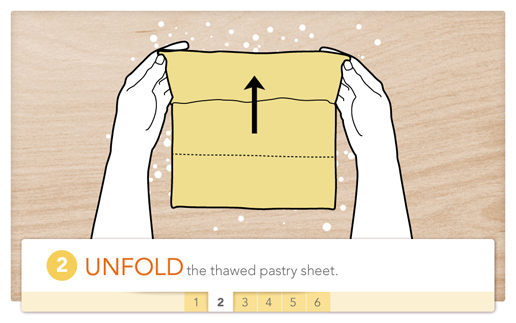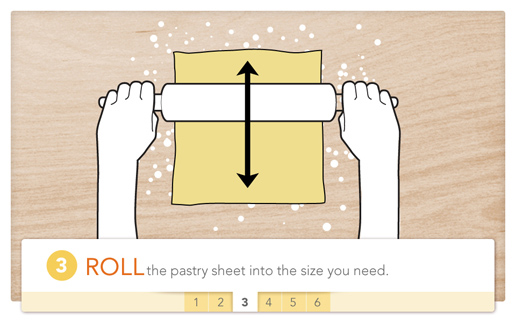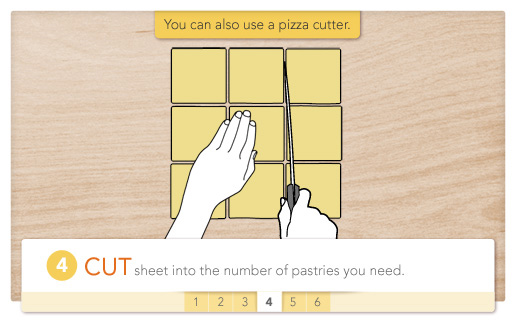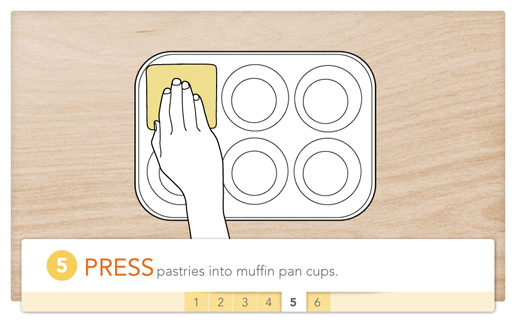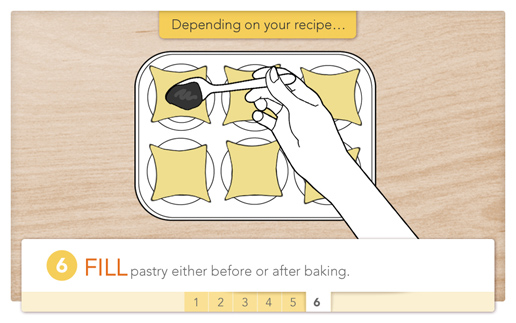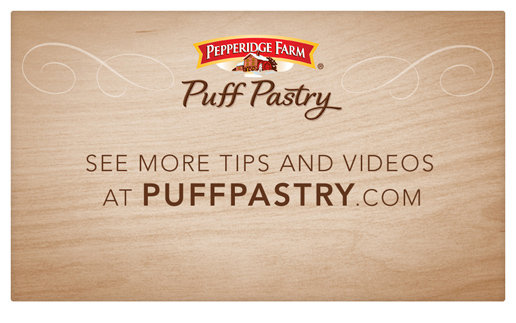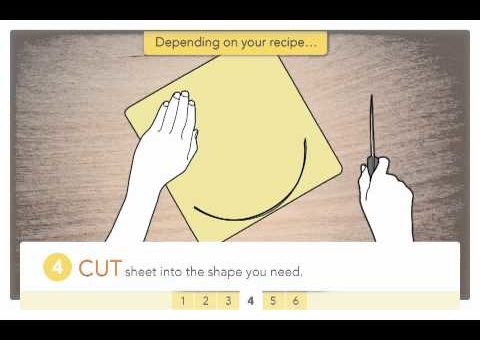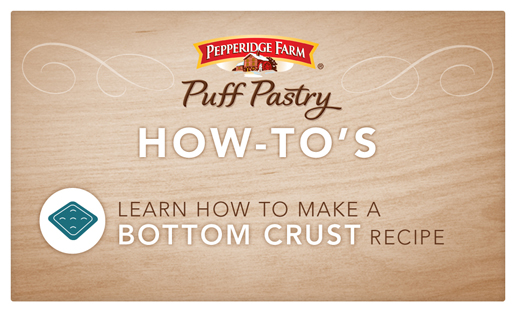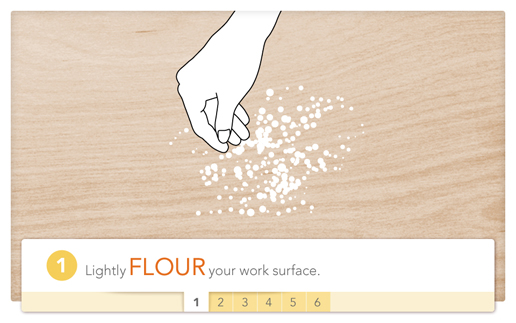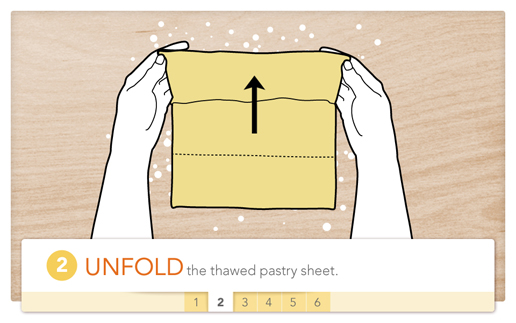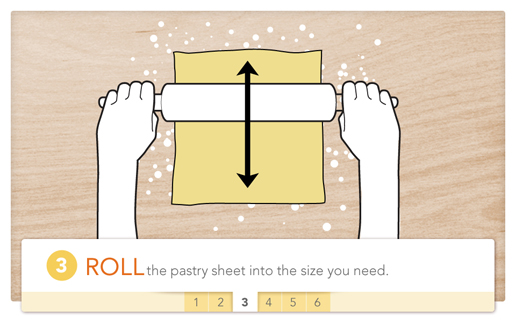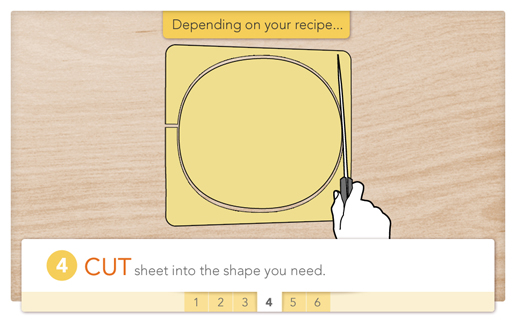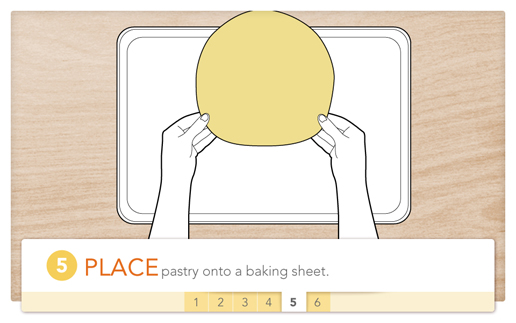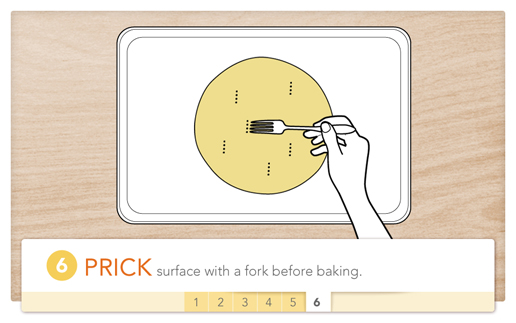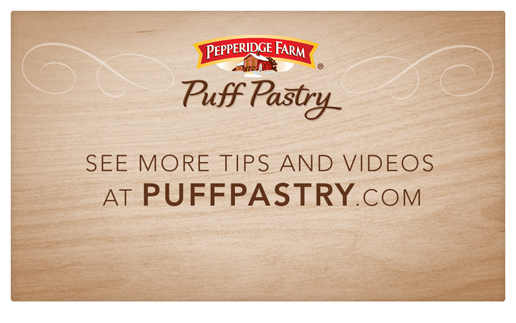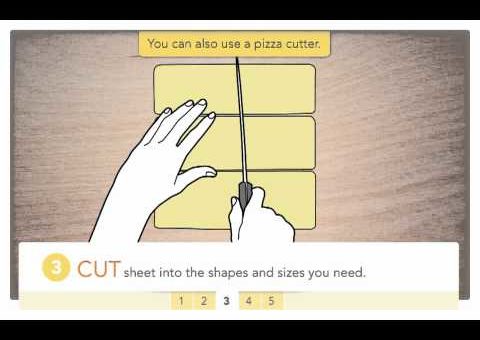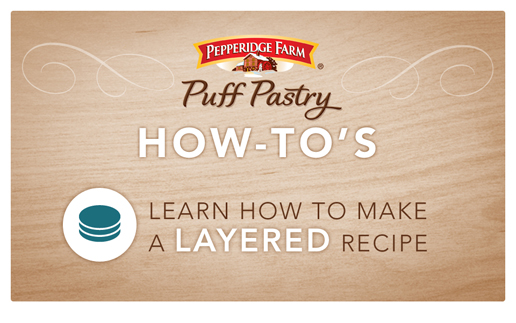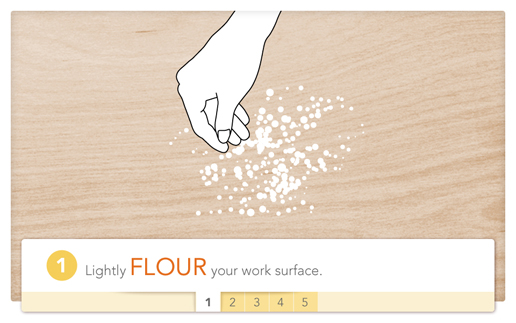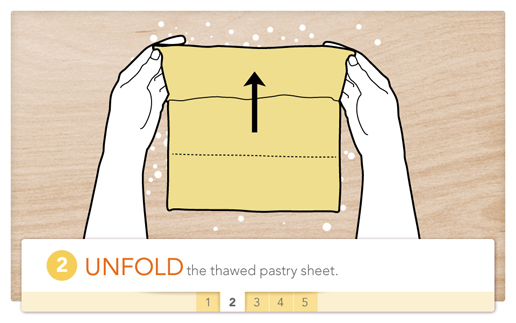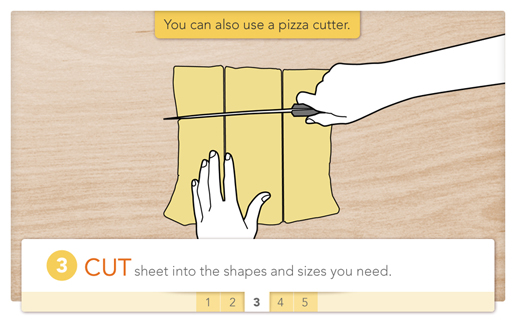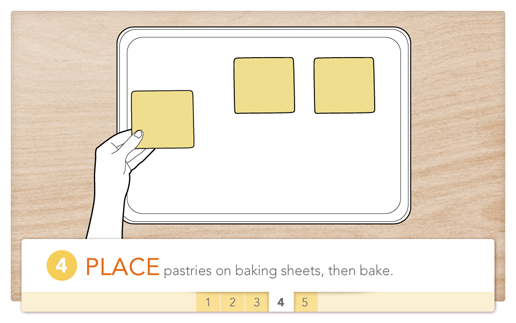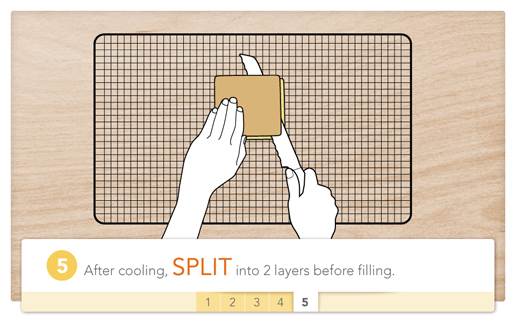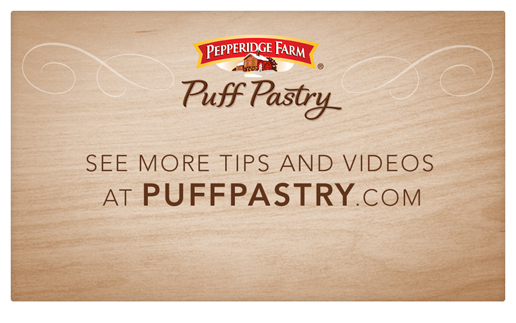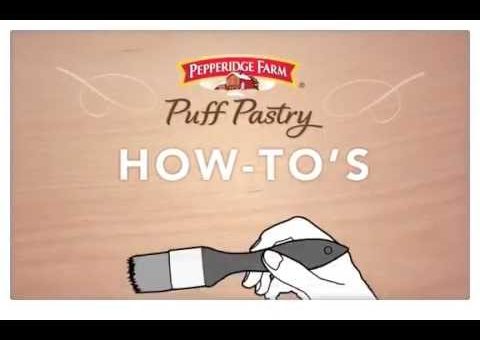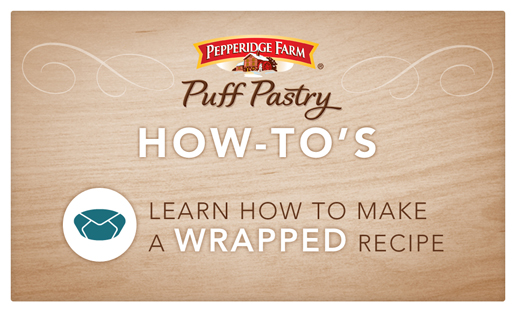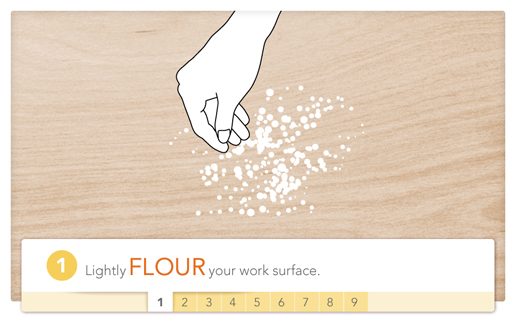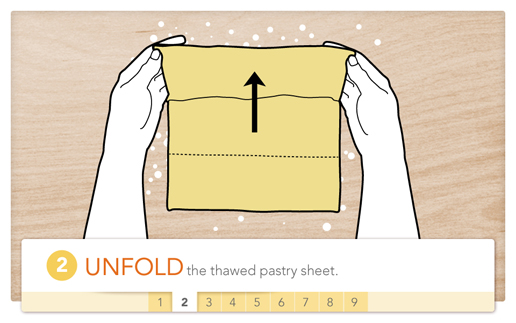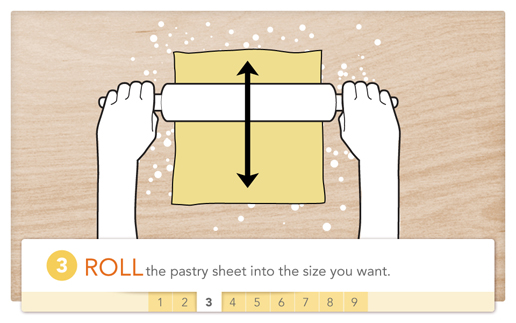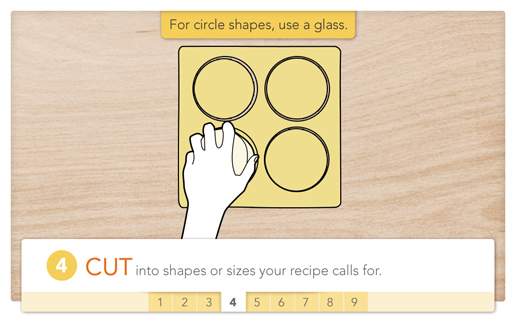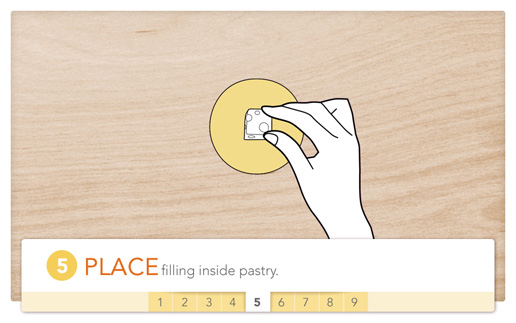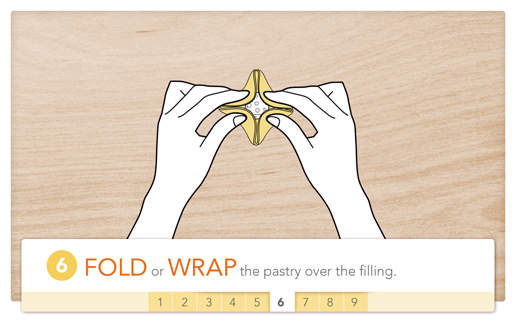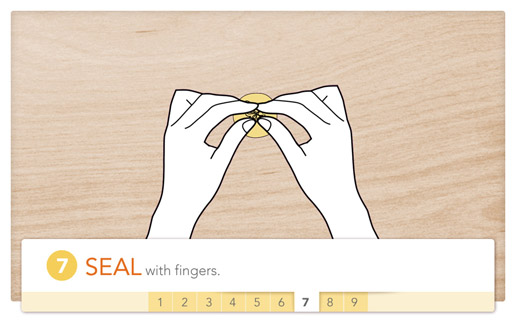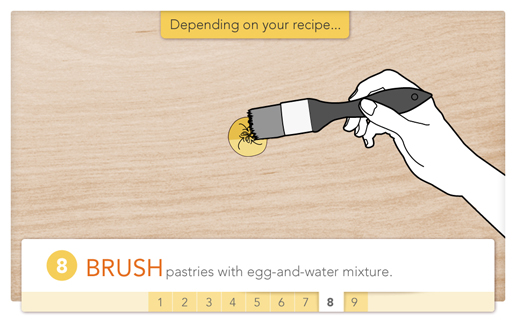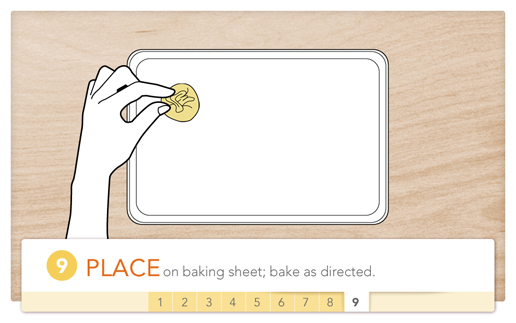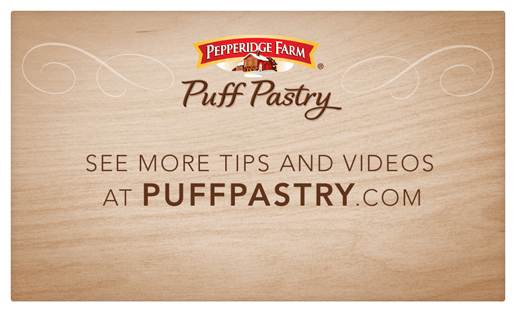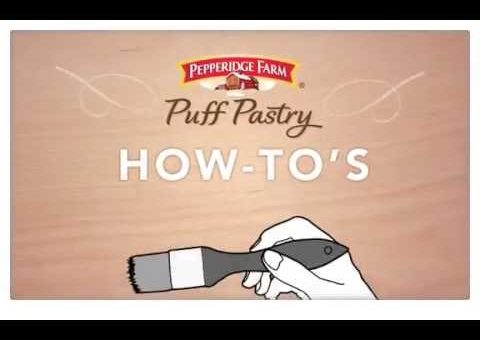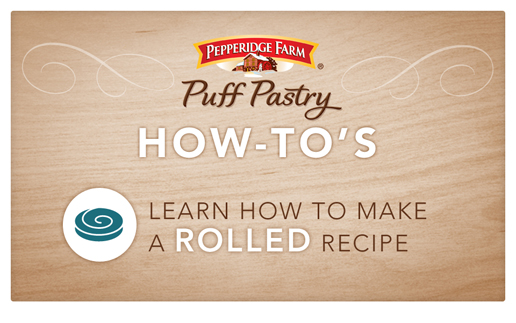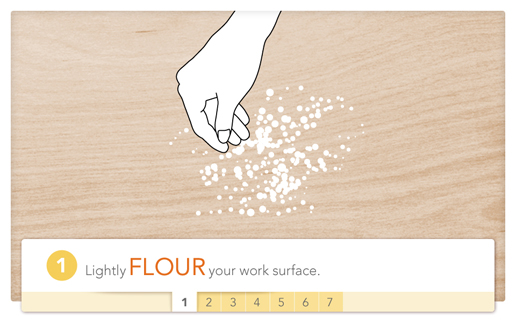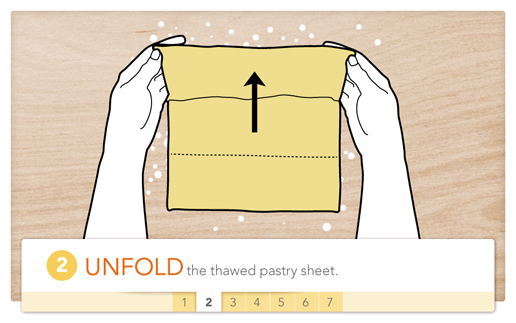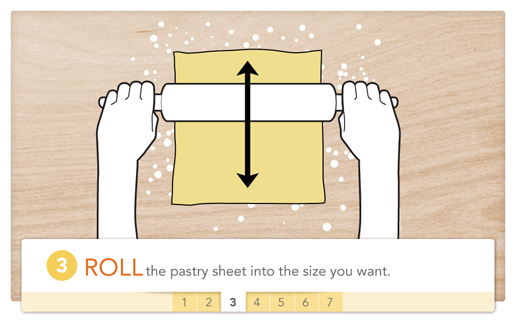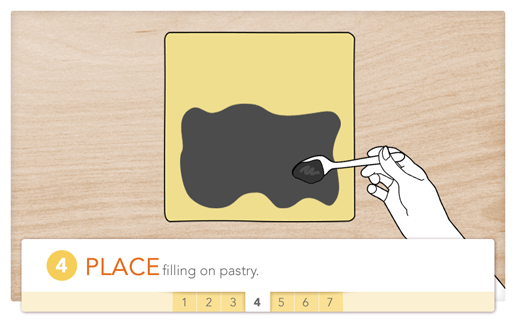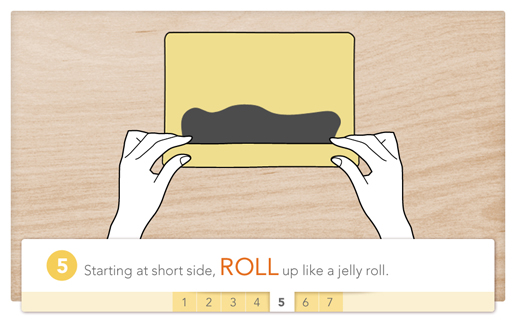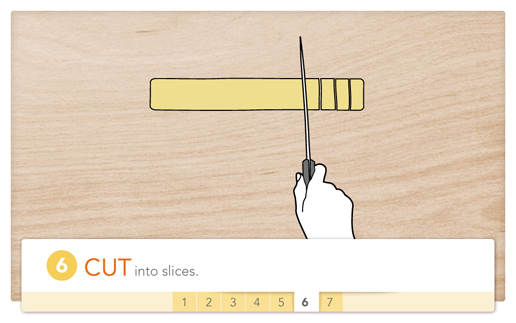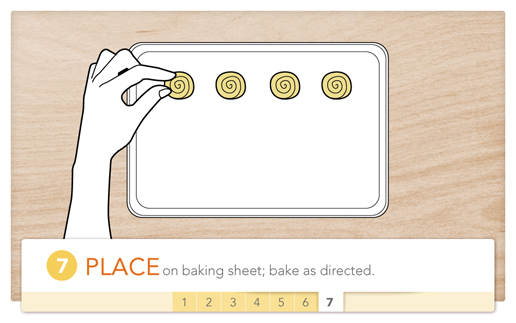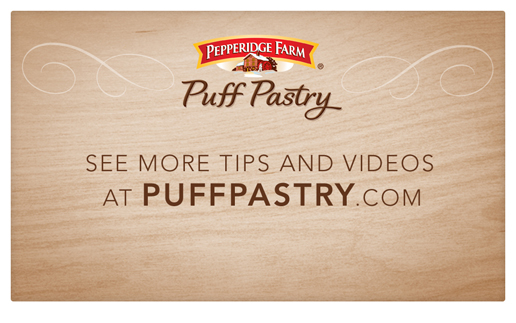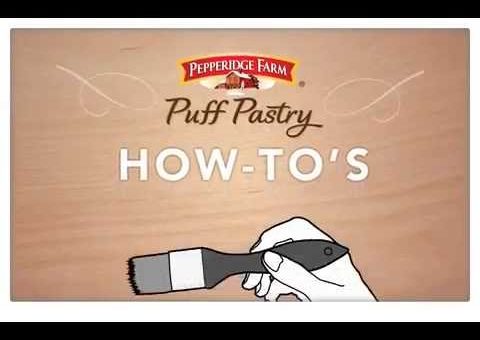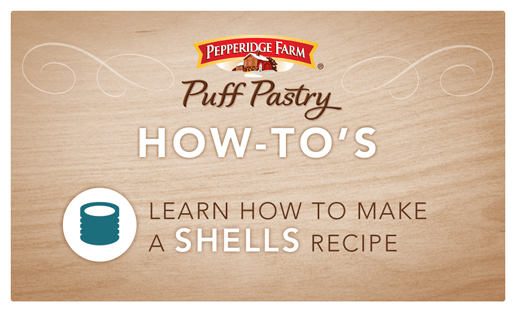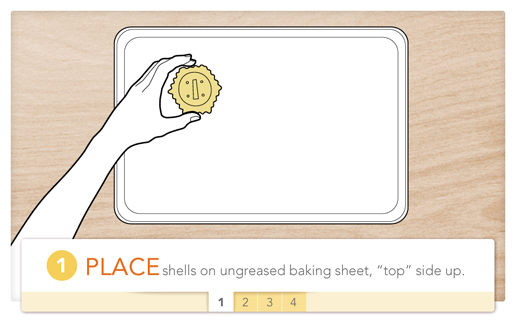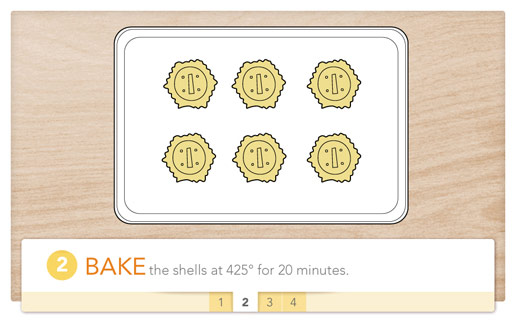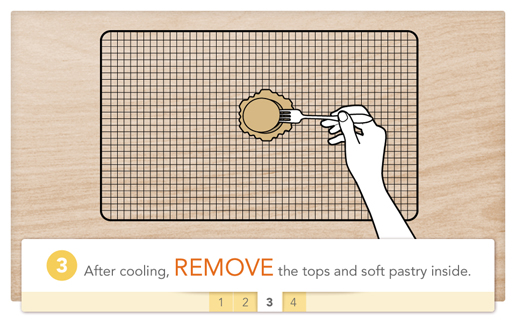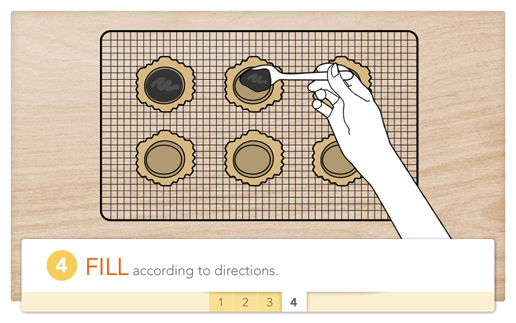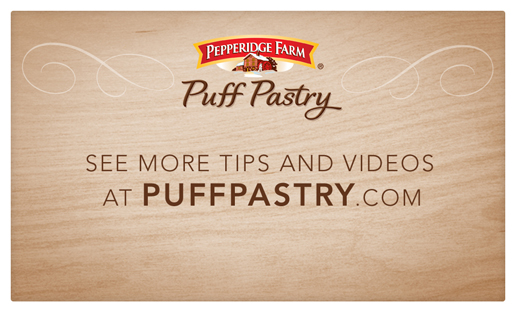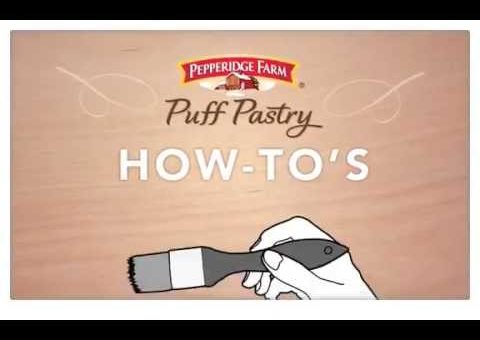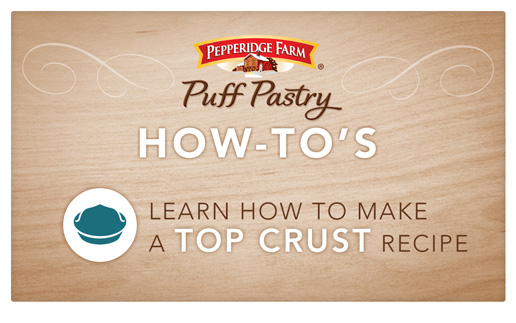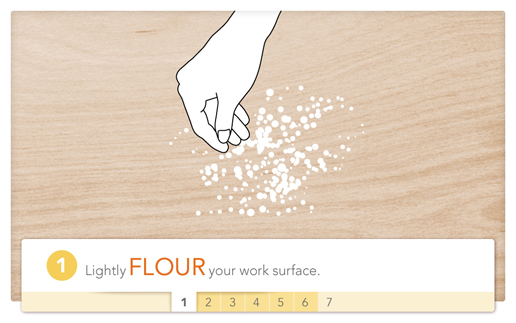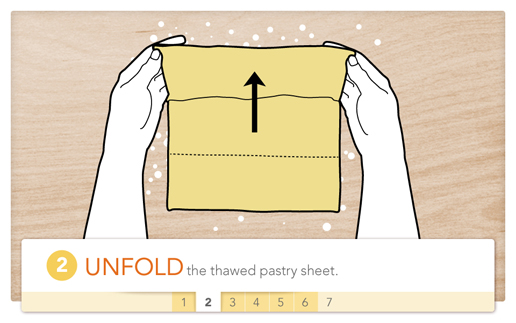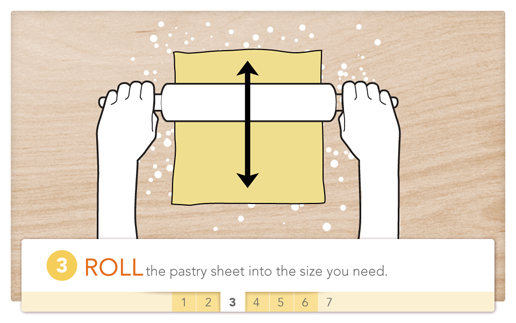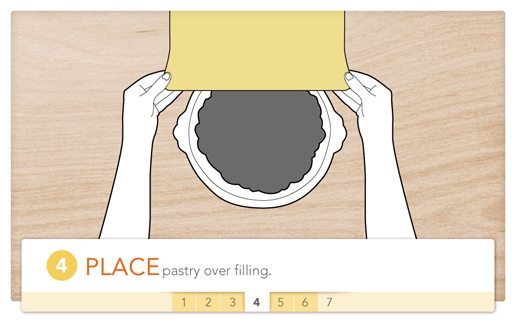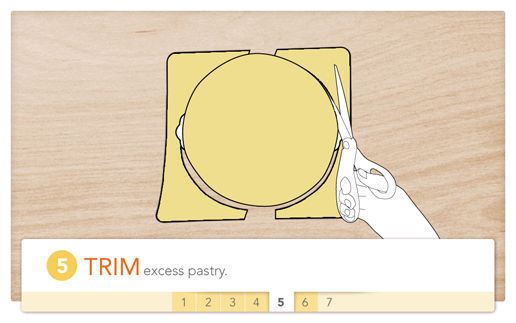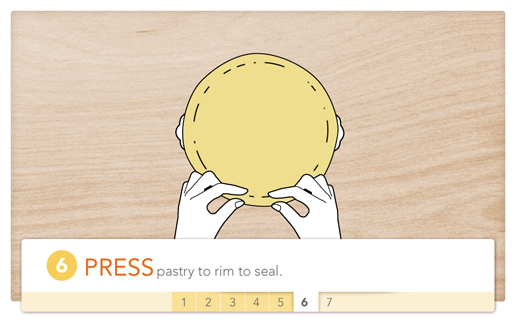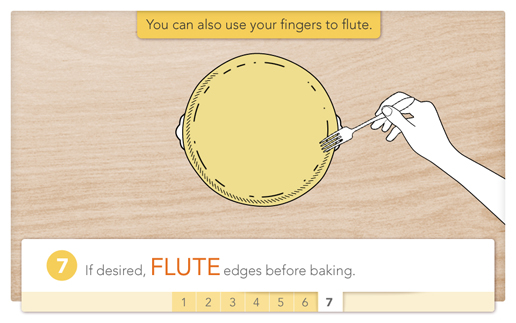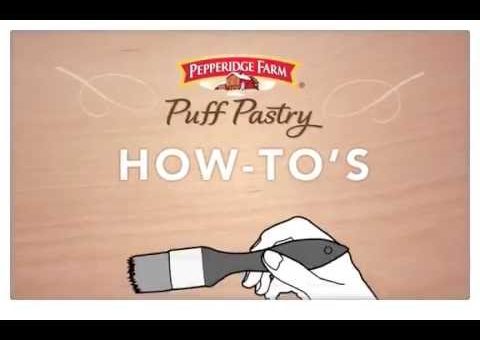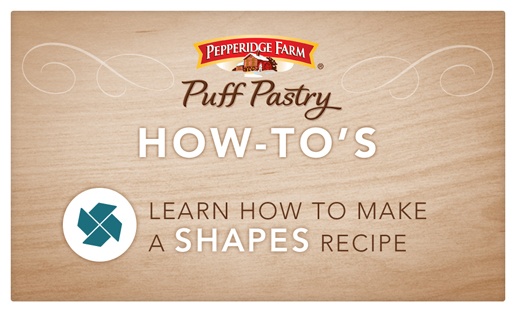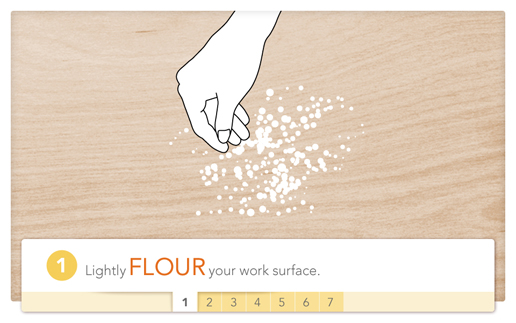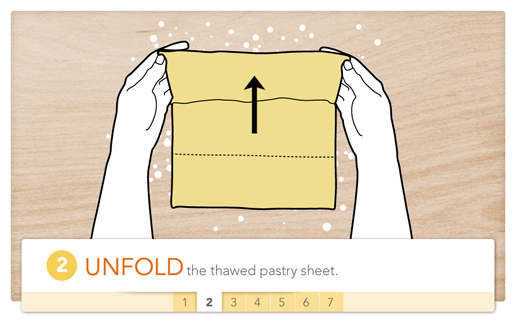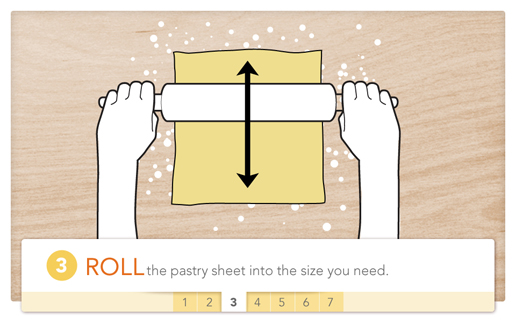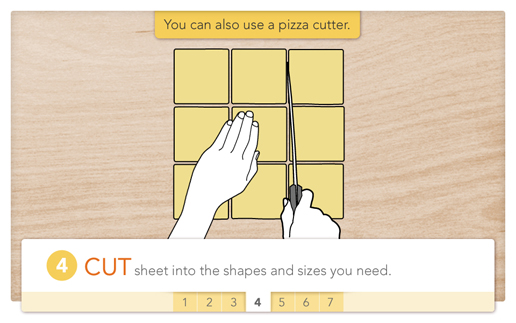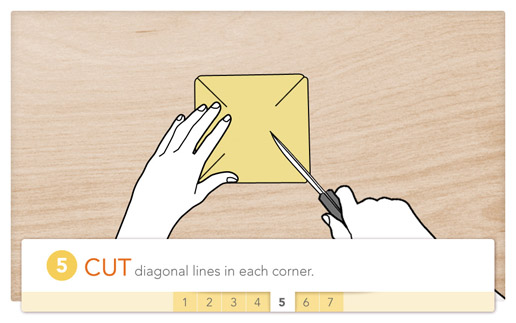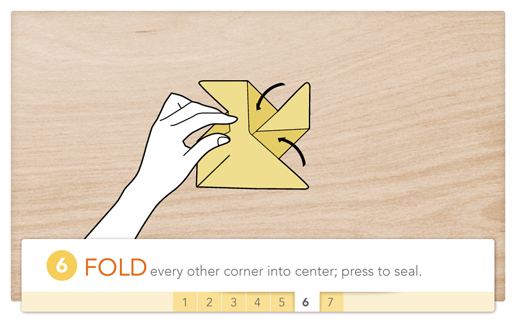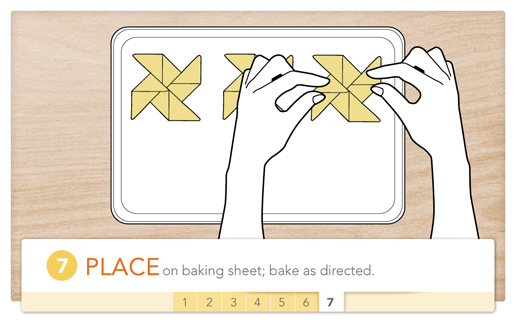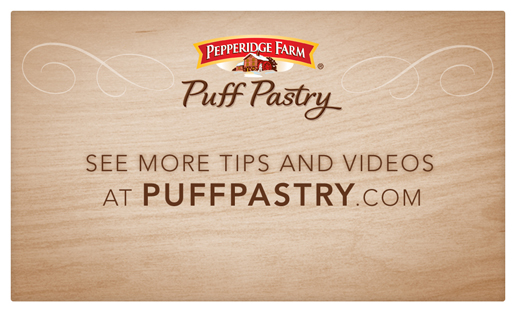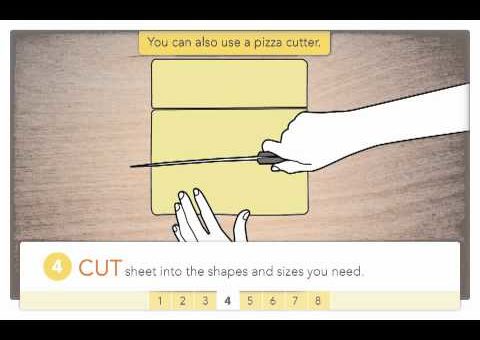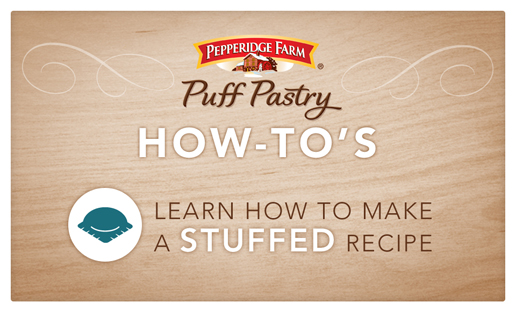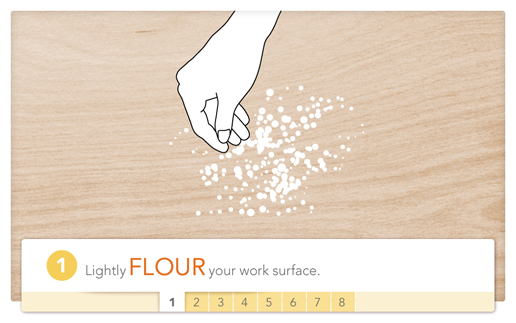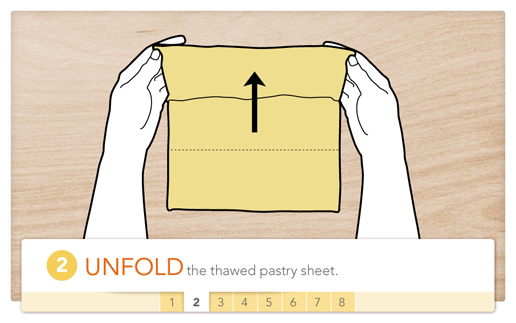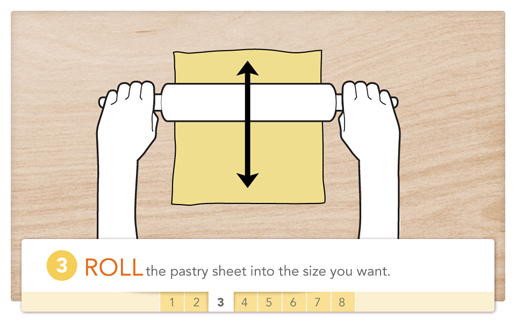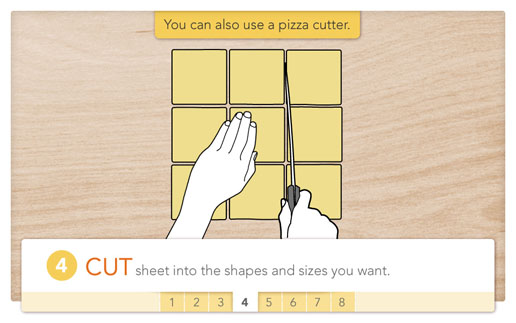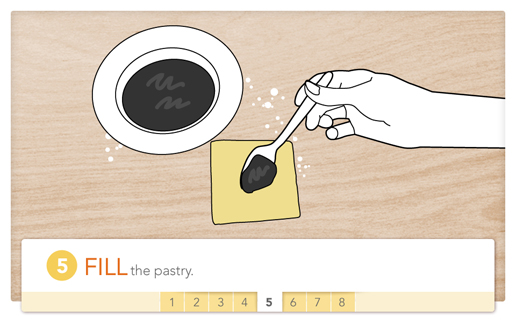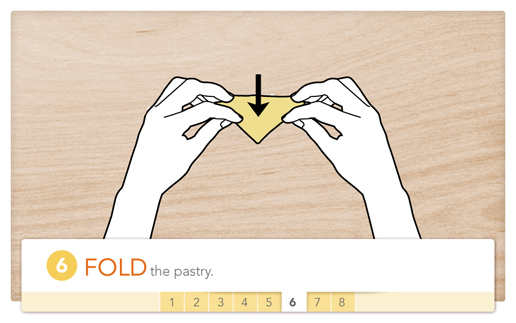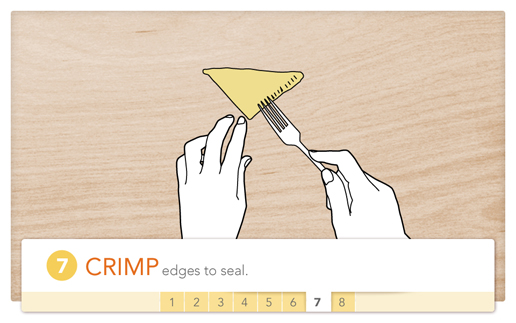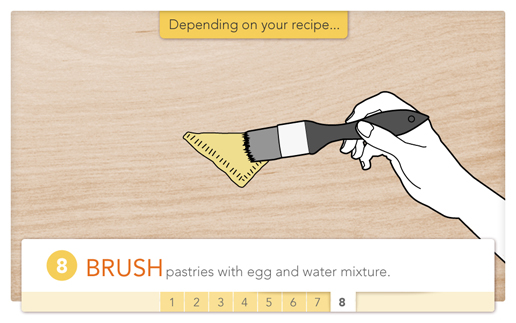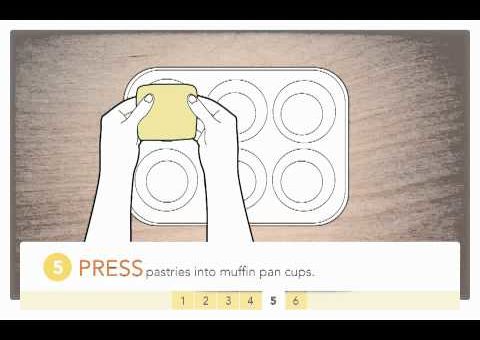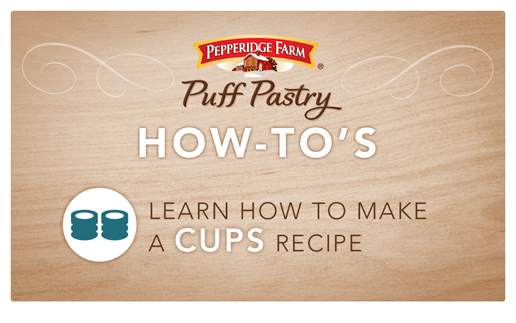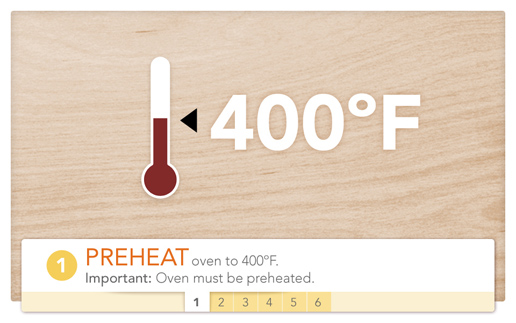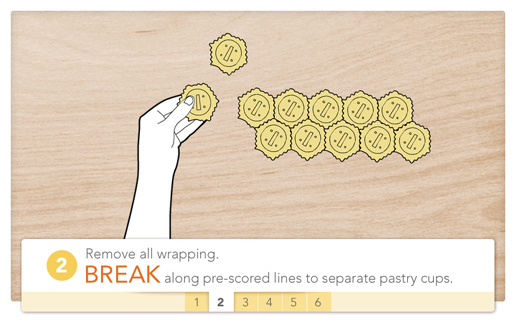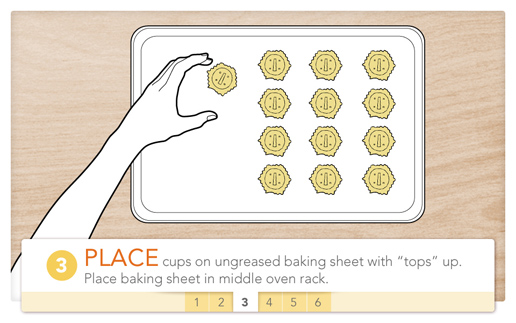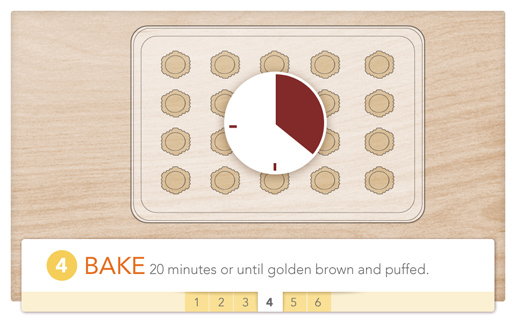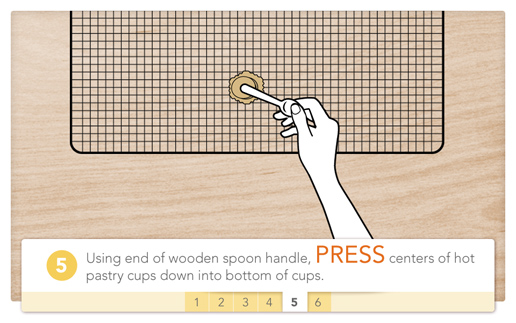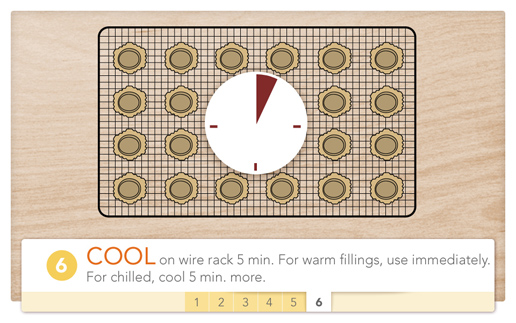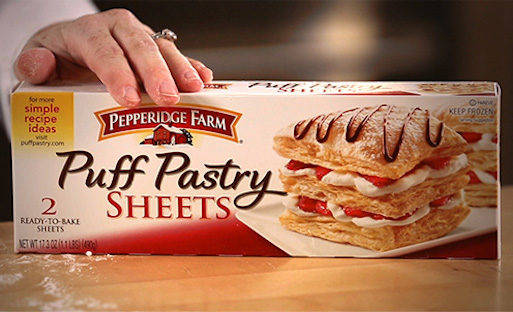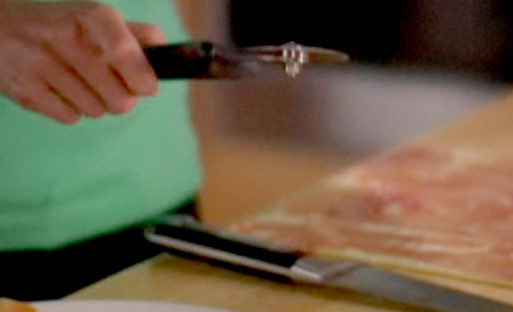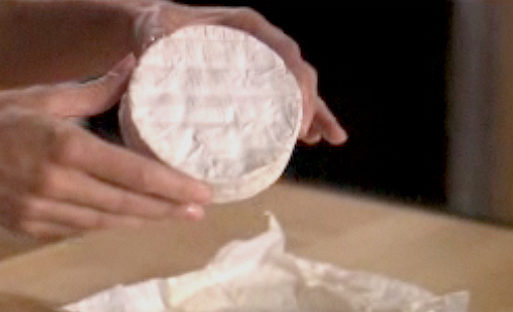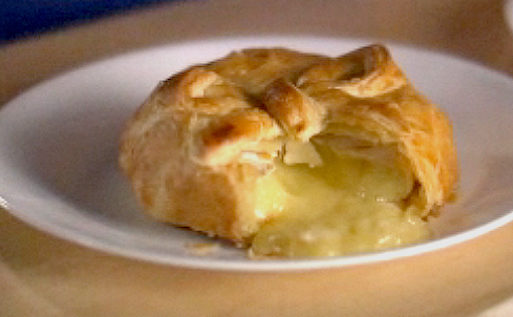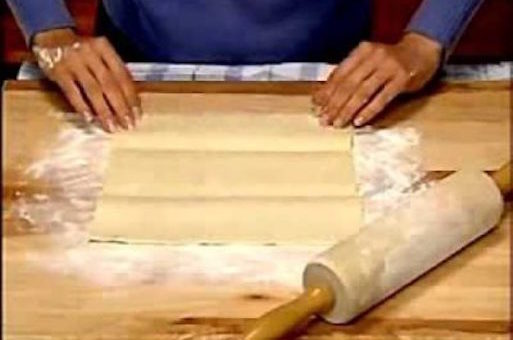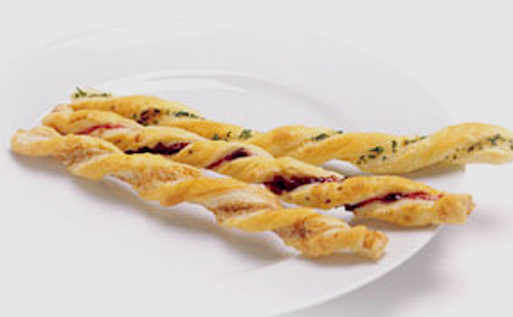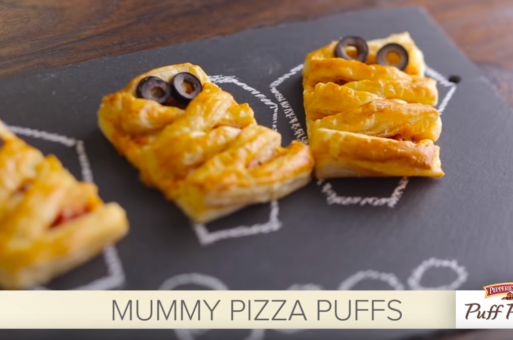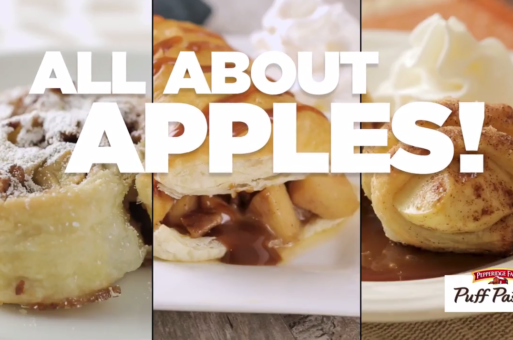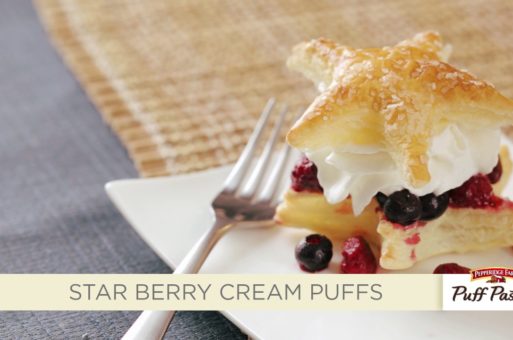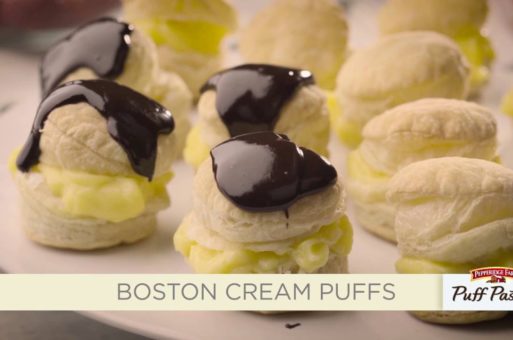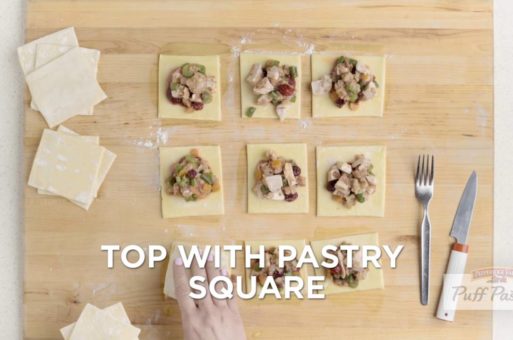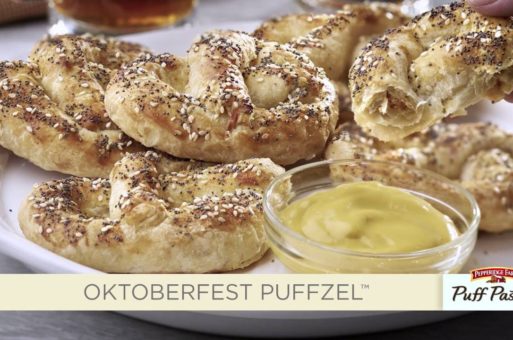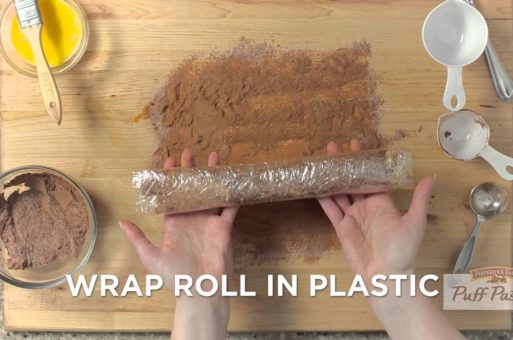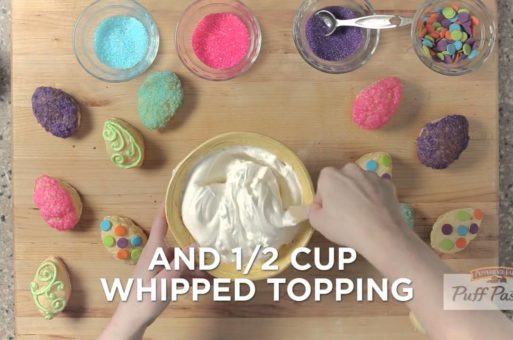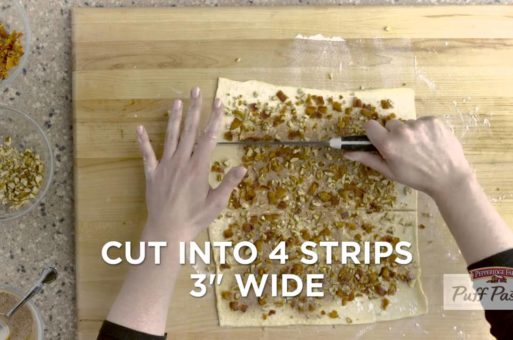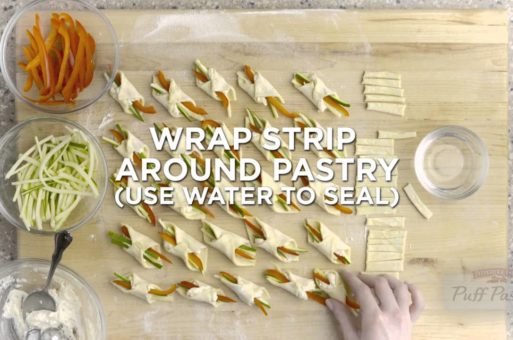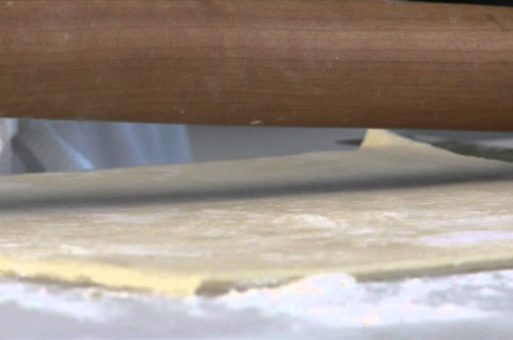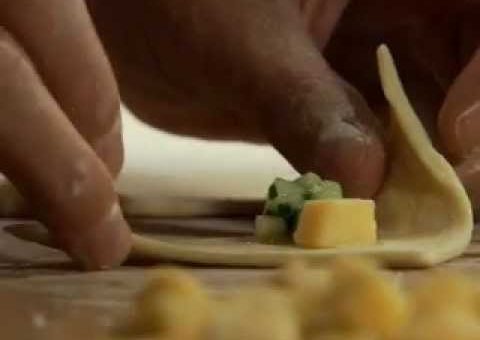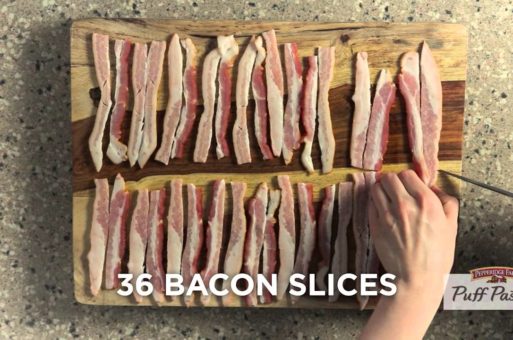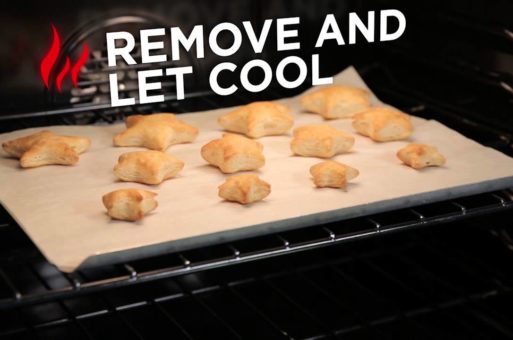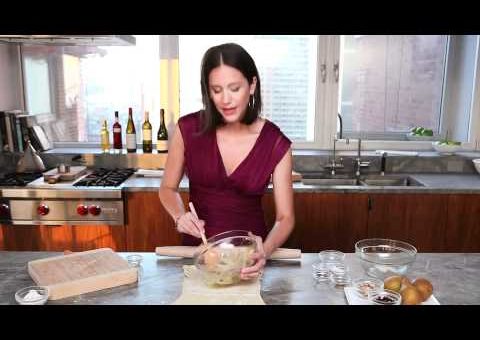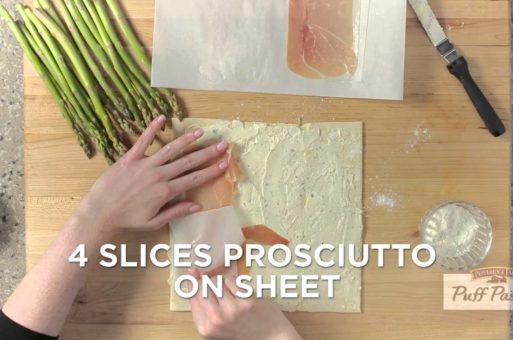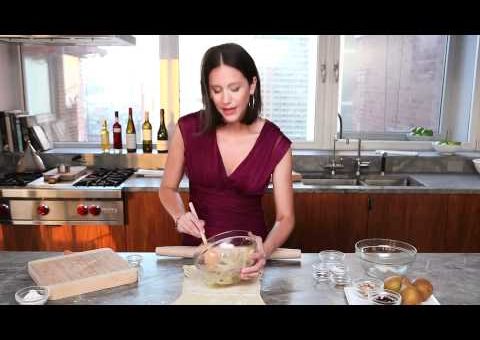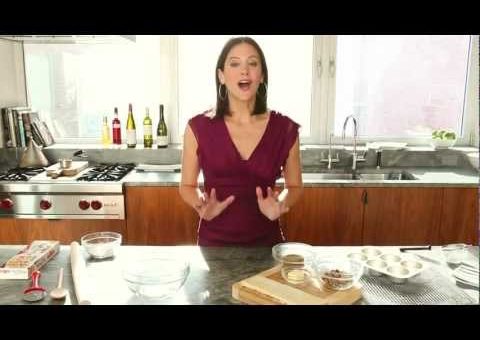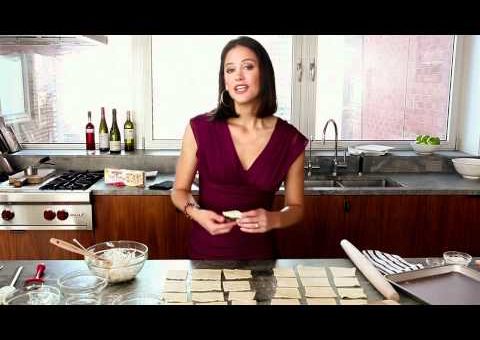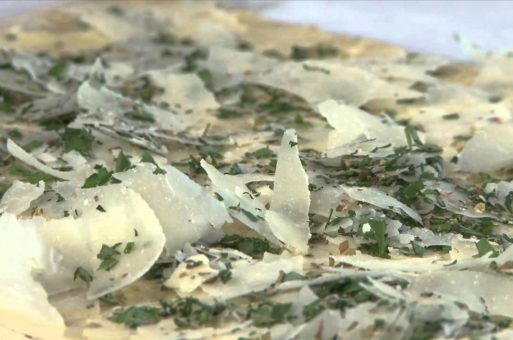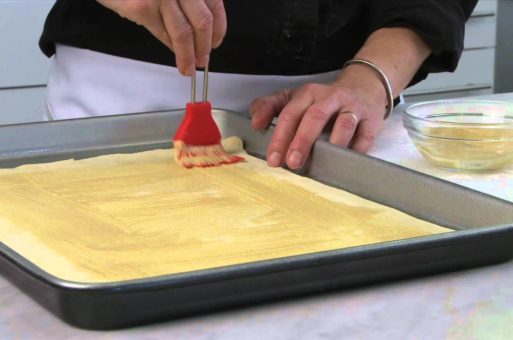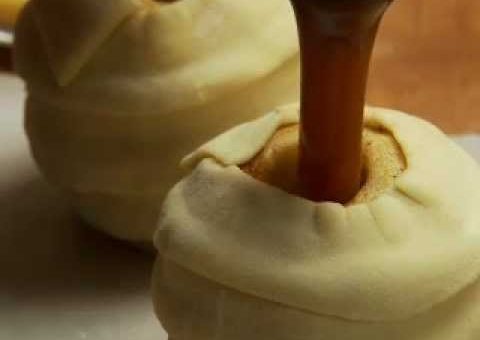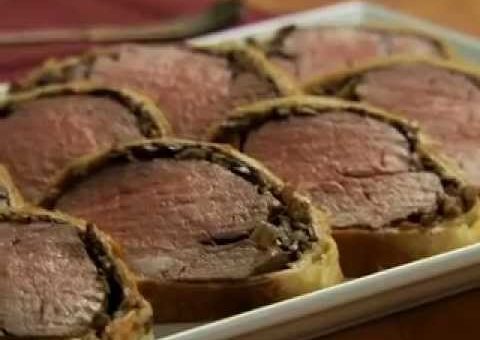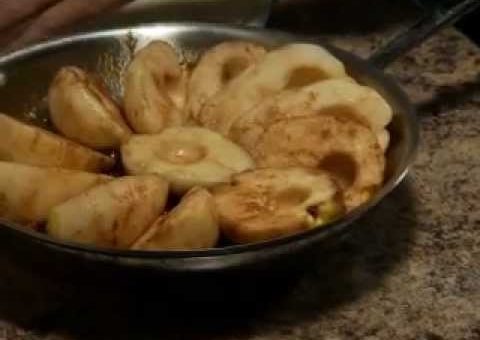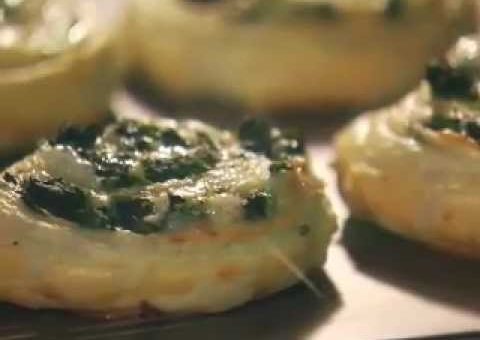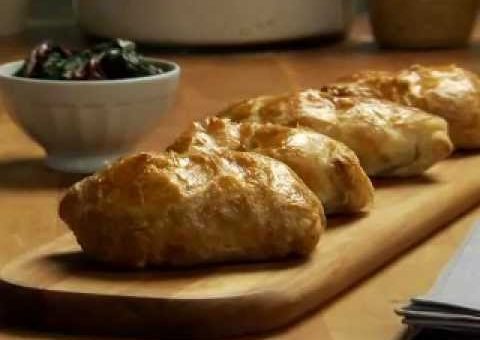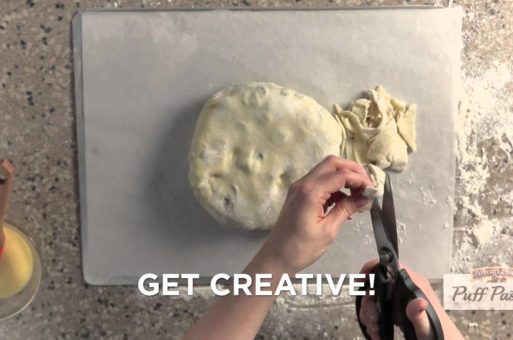We're Here to Help!
Techniques
Our recipes follow 11 preparation techniques.
Watch our demos to see the basic steps of each technique. Once you’ve learned them, you’ll be able to make any Puff Pastry recipe, and create your own!
CLICK TO WATCH A HOW-TO DEMO
Palmiers
Make these Palmiers recipes
Tartlets
Make these Tartlets recipes
Bottom Crust
Make these Bottom Crust recipes
Layered
Wrapped
Make these Wrapped recipes
Rolled
Make these Rolled recipes
Shells
Top Crust
Make these Top Crust recipes
Shapes
Make these Shapes recipes
Stuffed
Make these Stuffed recipes
Cups
Make these Cups recipes
Click to watch a tip video
General Tips
Puff Pastry can be stored in the freezer in the original packaging for up to 6 months.
Remove only as many pastry sheets as you need. Wrap unused sheets in plastic wrap or foil and return to the freezer.
Puff Pastry can puff up to 8 times its original thickness. That means even a sheet rolled to a thin ¼-inch thickness will rise 2 inches
Helpful Puff Pastry tools: Rolling pin, pastry board, sharp knife and/or pizza wheel to cut dough, pastry brush, baking sheets or parchment paper.
If you don’t have a pastry brush, you can use the tip of a rolled-up paper towel or your fingertip to apply egg wash.
Puff Pastry should be eaten within a few hours of baking. Keep filled and prepared pastry in the fridge, covered in plastic wrap, until you’re ready to bake and serve.
Thawing & Prepping Puff Pastry
Don’t try to manipulate Puff Pastry that’s not completely thawed; unfolding it while it’s still frozen could tear the sheet.
Thaw time may vary. Pastry should unfold easily but still be cold after thawing. If sheets reach room temperature, return to the fridge to rechill (but not refreeze).
To thaw at room temperature, remove pastry sheet(s) from the box and outer wrapping. Thaw pastry sheet(s) until the pastry unfolds easily, no more than 40 minutes.
To thaw in the microwave, remove 1 pastry sheet from the box and outer wrapping and wrap in a paper towel. Microwave on HIGH for 15 seconds. Turn the pastry sheet over. Microwave another 15 seconds. If pastry doesn’t unfold easily, microwave for another 5 seconds on each side.
You can thaw Puff Pastry in the fridge. Separate and place each sheet on a plate, cover with plastic wrap and defrost in the refrigerator for about 4 hours.
Once Puff Pastry is thawed, work quickly while it’s still cold. You can cut it into desired shapes, then store in the fridge until you’re ready for the next step.
Puff Pastry works best when cold. So chill your tools—knife, pastry/pizza cutter, cookie cutters, even pastry board and baking pans in the fridge—while thawing your pastry.
Use a long, heavy rolling pin to roll out your Puff Pastry dough: it helps create a pastry that’s even all over and you won’t have to press down too hard to roll it out.
Avoid pressing too hard when rolling out the ends and edges—you want to avoid pressing the edge layers together, as that will prevent the pastry from rising.
Handling Puff Pastry
Work with one Puff Pastry sheet at a time, keeping the others in the refrigerator.
Heat is the enemy of Puff Pastry—it handles best when cold. So avoid working with it on hot, humid days, in a stifling hot kitchen or next to your oven.
Puff Pastry works best when cold. Your hands should be cold, too, when handling it. Run them under cold water or squeeze a plastic zipper-top bag full of ice to cool them off.
Try to keep Puff Pastry from becoming too warm when working with it by only using your fingertips—the coolest part of your hands.
If any cracks form while you’re working with Puff Pastry, just rub with a little water and press to seal the dough together.
Use a marble pastry board to help keep Puff Pastry cold while rolling and cutting.
Use a floured surface to roll out your Puff Pastry sheet, but be sure to brush off excess flour before filling, cutting or folding, since flour will prevent layers from sticking together.
When cutting Puff Pastry, the sharper the knife or pastry cutter, the better. A dull edge can cement layers together and prevent pastry from rising.
Always cut Puff Pastry straight down, never on an angle, to prevent layers from sticking together and inhibiting the rise. Cut up and down, and don’t drag the knife.
You can brush an egg-wash glaze (1 egg plus 1 tsp. water) over the Puff Pastry to create a rich, golden sheen when baked.
Use an egg wash to help seal filled pastries and connect Puff Pastry pieces: mix 1 egg plus 1 tsp. water, brush between layers, then pinch or press together.
When using an egg wash, be sure it doesn’t run down the cut sides of the pastry, as that will make edges stick together and stop the pastry from rising.
If your Puff Pastry becomes soft and sticky while working with it, chill it in the fridge for a few minutes. Place in the refrigerator between rollings, too.
To seal stuffed Puff Pastries, pinch the edges together or press with the tines of a fork, just as you’d seal a piecrust.
Make sure the edges of your Puff Pastry are cut—a folded edge will not rise and puff.
Baking Puff Pastry
Always preheat your oven for a minimum of 15-20 minutes before baking, because Puff Pastry depends on even heat to rise and puff. Place pastries 1 inch apart.
If you want a flaky thin and crispy pastry that’s not very puffy, prick the unbaked Puff Pastry all over with a fork, which lets steam escape while baking.
For a flatter pastry without much puff—like a Napoleon—prick the dough all over with a fork, place parchment paper on top, then place 1-2 cookie sheets on top of that to weigh it down.
If you’re making a tart or filled Puff Pastry, place it on the baking sheet before adding toppings or fillings. That way, you won’t have to transfer the dough with the extra weight and risk tearing it.
For extra-thin, crisp Puff Pastry, set a second baking sheet on top of the filled pastry before baking.
To create a tart with an extra puffy crust: take a knife and score two lines around the edge, then prick the area inside this border with a fork.
Puff Pastry fillings should be at room temperature. If they’re hot, they can begin to melt the pastry layers, which will affect the pastry’s ability to rise and puff.
The kind of pan you use can affect baking times. A nonstick or dark glazed baking sheet may bake faster, so adjust your time and check pastry while baking.
When baking Puff Pastry, note that it’s done when it’s golden and puffy, not wet and doughy. Use the baking time in the recipe as a guideline, and rely on your eyes as well.
You can bake Puff Pastry on a baking sheet lined with parchment paper. For a more even rise, place a sheet of parchment paper on top of your pastry as well.
How to tell if Puff Pastry is done baking? Take a sharp knife and nick off a teensy piece to test for crispness and flakiness.
Always use a preheated conventional oven to bake Puff Pastry, never a microwave or toaster oven, as they can’t achieve the right golden puffy effect.
If bubbles appear on the surface while baking Puff Pastry, prick with a fork to deflate them.
Always flip and place the cut side of the Puff Pastry down on the baking sheet.
Serving & Decorating Puff Pastry
A lattice pattern can be created by topping the Puff Pastry with a metal cooling rack, then turning it at a right angle halfway through the baking.
You can use a fluted ravioli cutter or cookie cutters to create decorative edges or shapes. To create circles, use a plate, bowl or water glass and trace with a knife.
You can use scraps to make cookies by sprinkling sugar and cinnamon on top before baking; or make cheese straws by doing the same with grated Parmesan and chopped fresh herbs.
Puff Pastry scraps can be twisted into shapes and cut with cookie cutters to make pastry decorations, but don’t re-roll together with your dough, as it will not rise properly.
To add special texture and flavor, sprinkle chopped nuts, seeds, ground spices or grated cheese on top.
When serving Puff Pastry, cut with a serrated knife for the most even, attractive presentation.
Tips for Puff Pastry Shells & Cups
Remove as many Puff Pastry Shells or Cups from the package as needed. Rewrap any unused pastry Shells or Cups in plastic wrap or foil and return to the freezer.
Place Puff Pastry Shells or Cups on ungreased baking sheets with “top” facing up. Place Shells or Cups about 2 inches apart on baking sheet.
Always bake Puff Pastry Shells in a preheated 425° F oven. Do not bake Shells in a microwave or a toaster oven.
The top works well as a garnish.
Unfilled baked Puff Pastry Shells or Cups may be stored in an airtight container at room temperature for up to 2 days.
To recrisp Puff Pastry shells, place them in a 400° F oven for 5 minutes.
Always bake Puff Pastry Cups in a preheated 400° F oven. Do not bake Cups in a microwave or a toaster oven.
Brunch Tips with Puff Pastry
We partnered with Phoenix, AZ-based food blogger Laura Petersen from pinkplatecake.com to provide you with inspiration, tips and recipe ideas to host the perfect brunch.
Check out Laura’s unique take on the subject, and see her delicious ideas-in-action direct from the Puff Pastry brunch event she hosted, athttps://pinkcakeplate.com/strawberry-spinach-salad-with-fleur-de-sel-croutons-recipe/
Enjoy, and continue following Laura for more creative tips on entertaining!
Q : How often do you entertain at your home?
A : About twice a month.
Q : What is your favorite part about hosting brunch?
A : A lot of things can be prepared ahead and it combines two meals, so less time in the kitchen. It allows you to serve lunch entrees/items AND breakfast entrees/items.
Q : What are your top 3 tips for hosting a successful brunch?
A : I only have two. Keep it simple and prepare as much as you can ahead of time.
Q : What is your signature brunch cocktail that helps to make your events special?
A : A Mock Peach Mimosa.
Q : What recipes will you be preparing for the Puff Pastry Brunch event?
A : Chicken Pillows, Green Chili Cheeseburger Bites, PB and Chocolate Crescents (or something close to that), Strawberry Spinach Salad with Fleur de Sel Pastry Croutons, and a few others!
Q : What is the inspiration behind your Puff Pastry recipes for the event?
A : I want to use both savory and sweet recipes so I am looking to find a balance to that. My husband has inspired me to revamp a family favorite using puff pastry instead of the usual pastry we have used in the past!
Q : What is your favorite part about working with Puff Pastry?
A : It is so forgiving and that it is soooo versatile.
Q : As a Phoenix resident, what are some Southwestern brunch specialties using Puff Pastry that you would recommend?
A : Green Chili Cheeseburger Bites recipe coming soon!
Q : Your food tends to be very fun and colorful. How can home entertainers add some of that creative flair to brunch items featuring Puff Pastry?
A : Use nature for inspiration, use holidays for inspiration—but it doesn’t HAVE to be a holiday brunch!
Q : Children can often be picky eaters. What are your favorite kid-friendly brunch specialties using Puff Pastry?
A : Anything with chocolate and peanut butter in it, a big kid and little kid will usually eat that! I am working on one such recipe… I have not perfected it yet, but hope to have it worked out for the brunch!
CLICK TO WATCH A RECIPE VIDEO
-

Puff Pastry Cannoli Cones
-

Mummy Pizza Puffs
-

Apples 3-Ways
-

Star Berry Cream Puffs
-

Boston Cream Puffs
-

Thanksgiving Leftover Hand Pies
-

Oktoberfest Puffzel
-

Double Chocolate Palmiers
-

Easter Egg Creme Puffs
-

Puff Pastry Pull Apart Loaf with Maple Bacon
-

Puff Pastry Puffs Primavera
-

Smokey Sausage Tartlets
-

Tomato Jewel Tartlets
-

Brown Sugar and Bacon Puff Twists
-

Puff Pastry Christmas Trees
-

Apple Strudel
-

Prosciutto Asparagus Spirals
-

Southern Pecan Crisps
-

Jalapeno Poppers
-

Asparagus, Prosciutto and Fontina Tart
-

Parmesan Cheese Twists
-

Gouda & Apple Puff Pockets
-

Inside Out Caramel Apples
-

Beef Wellington
-

Pear & Walnut Tarte Tartin
-

Spinach Cheese Swirls
-

Herbed Chicken in Puff Pastry
-

Puff Pastry Brie En Croute
